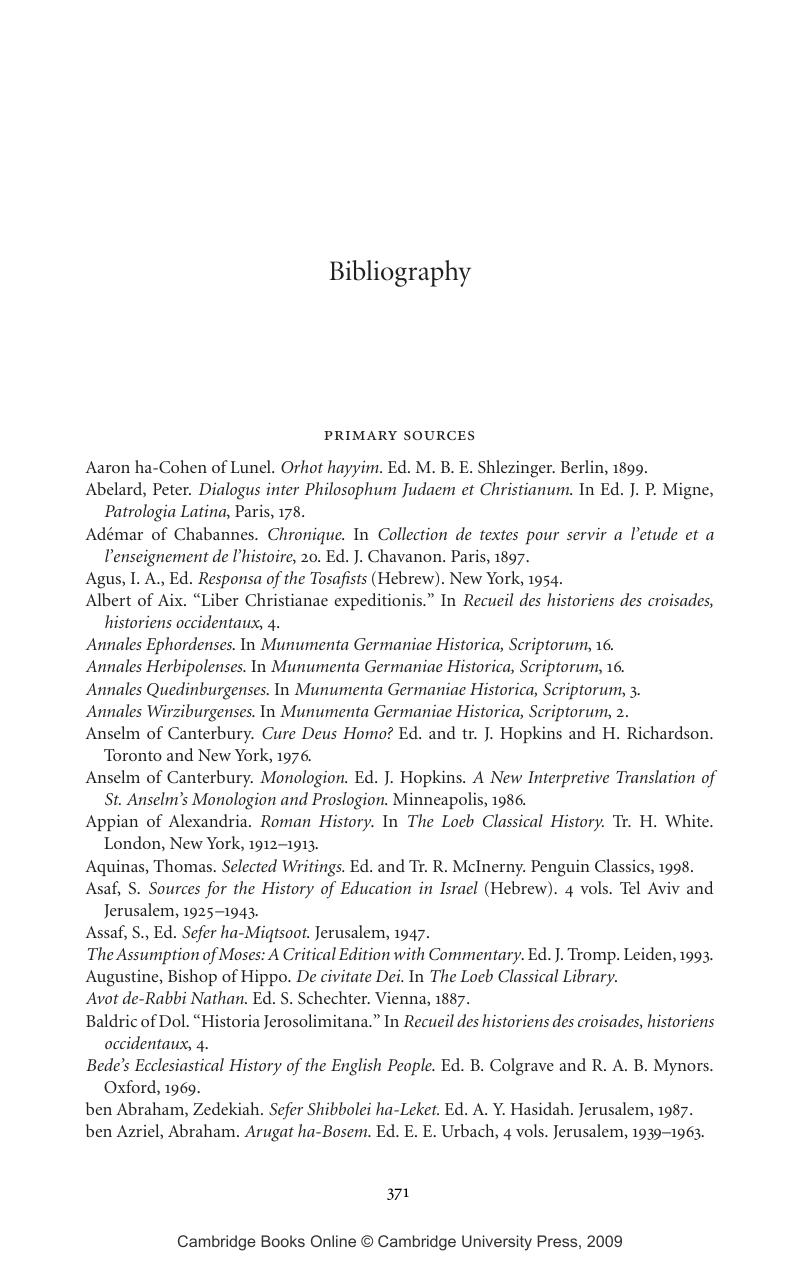Book contents
- Frontmatter
- Contents
- Preface
- Introduction
- 1 Mythic Martyrs
- 2 Between God and Caesar
- 3 “It Is Written in the Law”
- 4 Byzantine Burnt Offerings
- 5 Zarfat
- 6 Ve Ashkenaz: Traditional Manifestations
- 7 Ve Ashkenaz: Manifestations of a Milieu
- 8 Singing in the Fire
- 9 Fire from Heaven
- 10 Shifting Paradigms
- Notes
- Bibliography
- Index
- References
Bibliography
Published online by Cambridge University Press: 17 July 2009
- Frontmatter
- Contents
- Preface
- Introduction
- 1 Mythic Martyrs
- 2 Between God and Caesar
- 3 “It Is Written in the Law”
- 4 Byzantine Burnt Offerings
- 5 Zarfat
- 6 Ve Ashkenaz: Traditional Manifestations
- 7 Ve Ashkenaz: Manifestations of a Milieu
- 8 Singing in the Fire
- 9 Fire from Heaven
- 10 Shifting Paradigms
- Notes
- Bibliography
- Index
- References
Summary

- Type
- Chapter
- Information
- Jewish Martyrs in the Pagan and Christian Worlds , pp. 371 - 408Publisher: Cambridge University PressPrint publication year: 2005



